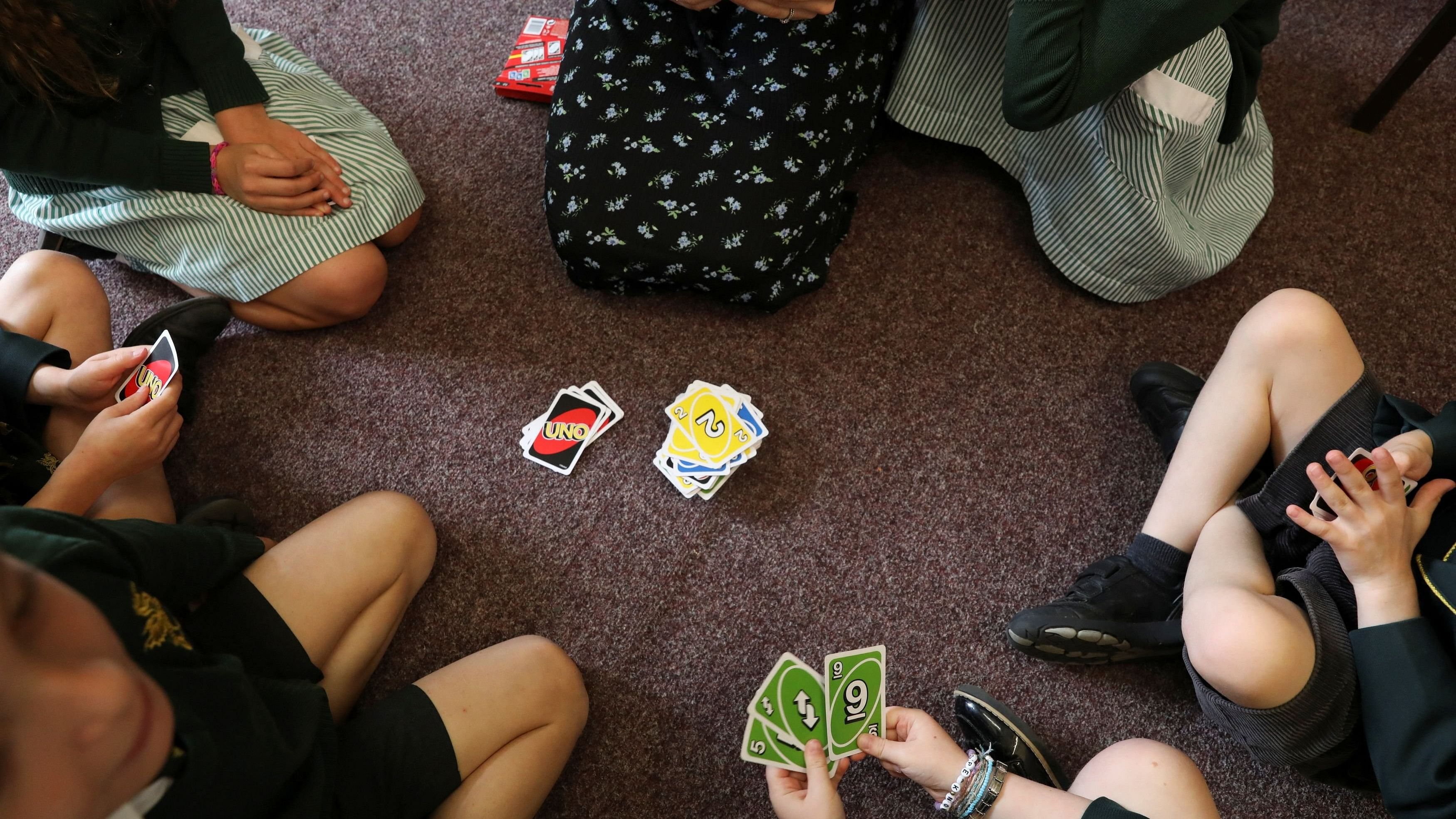
Students play a card game 'Uno' in their classroom with teacher. Representative image.
Reuters
While climate change is in the news and children are being introduced to climate science in schools, another aspect of climate is very relevant to students. Just as our planet’s climate affects our everyday lives, the classroom climate also impacts student learning and well-being.
In 'How Learning Works', Susan Ambrose, Michael Bridges and colleagues state that classroom climate entails “intellectual, social, emotional, and physical environments in which our students learn.” How do educators go about creating conducive learning climates in their classrooms?
Sangitha Krishnamurthi, co-founder of The Teachers Collective, an organisation committed to reframing inclusion in classrooms, believes that the social and emotional tenor of the classroom is the most critical element. The teacher largely sets this. Foremost, teachers must view their role as “teaching a child” rather than merely “teaching a subject.”
Sriranjani, Coordinator of the Kaigal Education & Environment Program, concurs that teachers must first connect with every child, regardless of their profile or abilities. She emphasises the importance of creating safe spaces where children can share without feeling judged. Open communication channels between teachers and children are essential for students to feel their voices are valued. While teachers may pay attention to what children say, they may also notice the silences and observe classroom dynamics when the teacher is not front and centre.
Manisha Pereira, Principal of Sherwood High, says teachers are encouraged to build rapport with children from admission to everyday classroom interactions. To welcome students in the morning, some teachers write a password on the door that students must decode before entering the classroom. Others put up a welcome quote to greet their students. Primary school teachers eat lunch with their students so they get extra time to bond and get to know their students better.
Reflecting diversity
Regarding the cognitive facet, the curriculum and lesson plan must reflect the various forms of diversity in a classroom. Krishnamurthi points out that all classes, whether or not they profess to be inclusive, have diversity embedded in them. A good teacher factors in this diversity while designing lessons and activities. Pereira believes it’s important to address children’s needs rather than box them with labels.
Sriranjani adds that lessons have to be dynamic and intellectually responsive to children. She feels lessons must be planned with actual children in mind rather than viewing the “child as an abstraction.” Krishnamurthi also debunks the “myth of the average learner” and dissuades teachers from planning lessons with an “average child” in mind.
To meet the varying needs of a heterogeneous group of learners, Sherwood High relies on a buddy programme in which children who face difficulties are given additional support from a special educator or a peer familiar with the concept or skill being taught.
Just as students are unique, so too are teachers. Though teachers at Sherwood High are given a set of concepts to teach, they have autonomy in terms of how they transact and transmit these constructs to children. Teachers also receive training regularly and are encouraged to take up continuing education courses based on their interests.
When it comes to assessing classroom climate, Krishnamurthi notes that fancy infrastructure with tech-enabled classrooms is not required. Pereira also believes in minimising technology usage, especially in younger grades. All three educators advocate having a flexible seating arrangement for individual, small group, and class instruction.
Krishnamurthi recommends arranging desks in an open-U as it lends itself to these possibilities. Sriranjani also prefers circular and semi-circular arrangements as they foster many-to-many conversations without the teacher being the focal point. At Sherwood High, seating arrangements facilitate collaborative activities.
Krishnamurthi suggests that classrooms may also contain space for movement and quiet corners for children to calm down when they are overwhelmed by their emotions. Having a few tables at the back of the classroom for children to stand and work could also aid some students. Pereira vouches for a reading corner where children who have completed their work can engage and extend themselves.
Cultivating a conducive classroom climate for all children to thrive doesn’t necessarily involve a huge investment of money. However, it entails a deep resolve and commitment to respect and nurture every child’s unique talents and traits. Teachers also have to be supported to help all children realise their best possible selves.